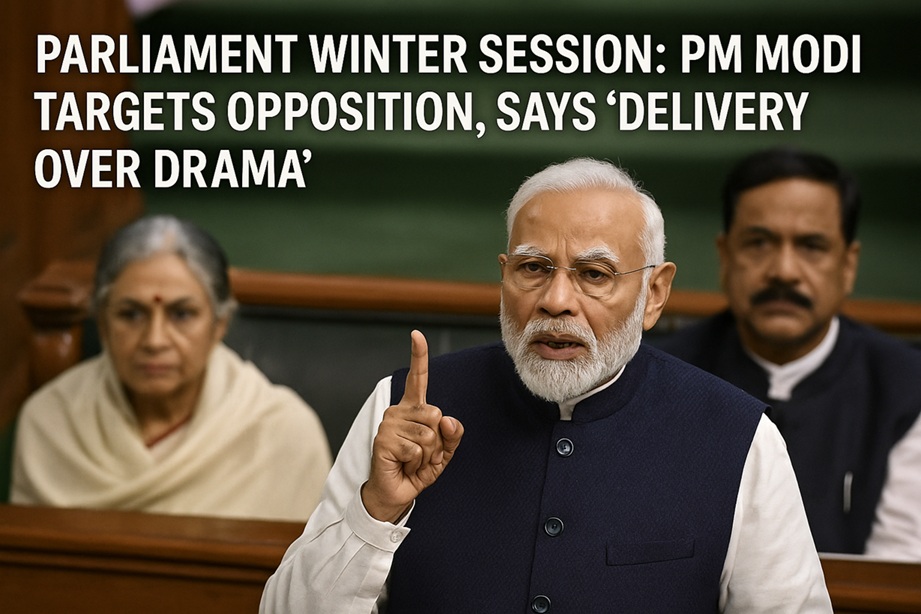After facing a severe electoral setback in Delhi, Arvind Kejriwal’s political future appears uncertain. The Aam Aadmi Party (AAP), which once enjoyed significant influence in the capital, has suffered major losses. Kejriwal himself lost his seat, and many of his close allies also failed to secure victories. With no substantial political ground left in Delhi, reports suggest that Kejriwal is now turning his focus towards Punjab, where AAP still holds power. But what does this mean for Punjab’s political landscape?
The Collapse of AAP in Delhi
Delhi was once considered Kejriwal’s stronghold. However, the recent elections have changed the equation entirely. The AAP government in Delhi heavily relied on populist measures such as free electricity, water, and public transportation to retain voter support. While these policies initially helped the party gain traction, the Bharatiya Janata Party (BJP) countered them effectively by offering similar benefits. As a result, AAP’s appeal diminished significantly.
Additionally, AAP’s governance model in Delhi was not built on a strong ideological foundation. It was largely dependent on government incentives, administrative appointments, and transactional politics. With the electoral loss, the party has lost its control over Delhi, leaving Kejriwal with little political leverage in the capital.
A Strategic Shift to Punjab
With Delhi no longer a viable political base, Kejriwal is reportedly planning to relocate to Punjab, the only state where AAP is in power. Sources within AAP indicate that Kejriwal is considering shifting his operations to Ludhiana, a centrally located city in Punjab. While the state’s administrative capital is Chandigarh, Ludhiana’s strategic location makes it an ideal choice for managing political affairs.
Reports suggest that Kejriwal’s move is not just about geographical relocation but also about controlling Punjab’s government from behind the scenes. He is believed to be in the process of consolidating his influence over the state’s political machinery, particularly by curbing the authority of Punjab Chief Minister Bhagwant Mann.
Undermining Bhagwant Mann’s Authority?
One of the key speculations surrounding Kejriwal’s shift to Punjab is his alleged plan to weaken Bhagwant Mann’s leadership. Sources suggest that Kejriwal is in discussions with several AAP leaders in Punjab to assert his dominance over the government. There are even rumors that if Mann does not align with Kejriwal’s agenda, he could be replaced.
Kejriwal’s growing control is already evident in recent administrative decisions. Many bureaucrats and officials from Delhi’s AAP government are reportedly being transferred to Punjab. Several top advisors and strategists who were once instrumental in AAP’s Delhi operations are now being placed in key positions in Punjab’s administration. This shift indicates Kejriwal’s intention to centralize decision-making power under his leadership.
Rajya Sabha Ambitions and Punjab’s Role
Apart from controlling the state government, Kejriwal is also eyeing a Rajya Sabha seat through Punjab. Given that AAP holds a majority in the Punjab Assembly, it can nominate members to the Rajya Sabha. Kejriwal’s recent tweet about Punjab’s drug problem, after a long period of media silence, suggests that he is attempting to establish a stronger public presence in the state.
While Kejriwal’s ambitions in Punjab are evident, his party members are reportedly divided on the issue. Some AAP leaders fear that Kejriwal’s increasing control could create internal conflicts within the party, leading to further instability. Already, there are reports of factionalism within AAP’s Punjab unit, with MLAs and ministers expressing concerns over interference from Delhi-based leadership.
Political Ramifications and Congress’s Role
The Congress party, which has traditionally been a strong contender in Punjab, is closely monitoring the situation. The party has already deployed senior leaders like Bhupesh Baghel to engage with AAP dissidents. If internal tensions within AAP escalate, Congress could benefit by attracting discontented AAP MLAs to its fold.
Moreover, with Punjab’s political scenario becoming more unpredictable, BJP is also likely to explore opportunities to strengthen its position in the state. If AAP’s internal struggles continue, opposition parties might gain an advantage in future elections.
What Lies Ahead?
Kejriwal’s move to Punjab marks a critical juncture in his political career. With AAP losing its footing in Delhi, Punjab remains his last stronghold. However, the path ahead is not easy. Managing a state government remotely, controlling party affairs, and dealing with internal dissent will be challenging tasks. Additionally, opposition parties are ready to capitalize on AAP’s vulnerabilities.
Whether Kejriwal’s strategy will succeed in cementing his political influence in Punjab or lead to further setbacks remains to be seen. One thing is certain—the coming months will shape the future of both AAP and Kejriwal’s political ambitions.





